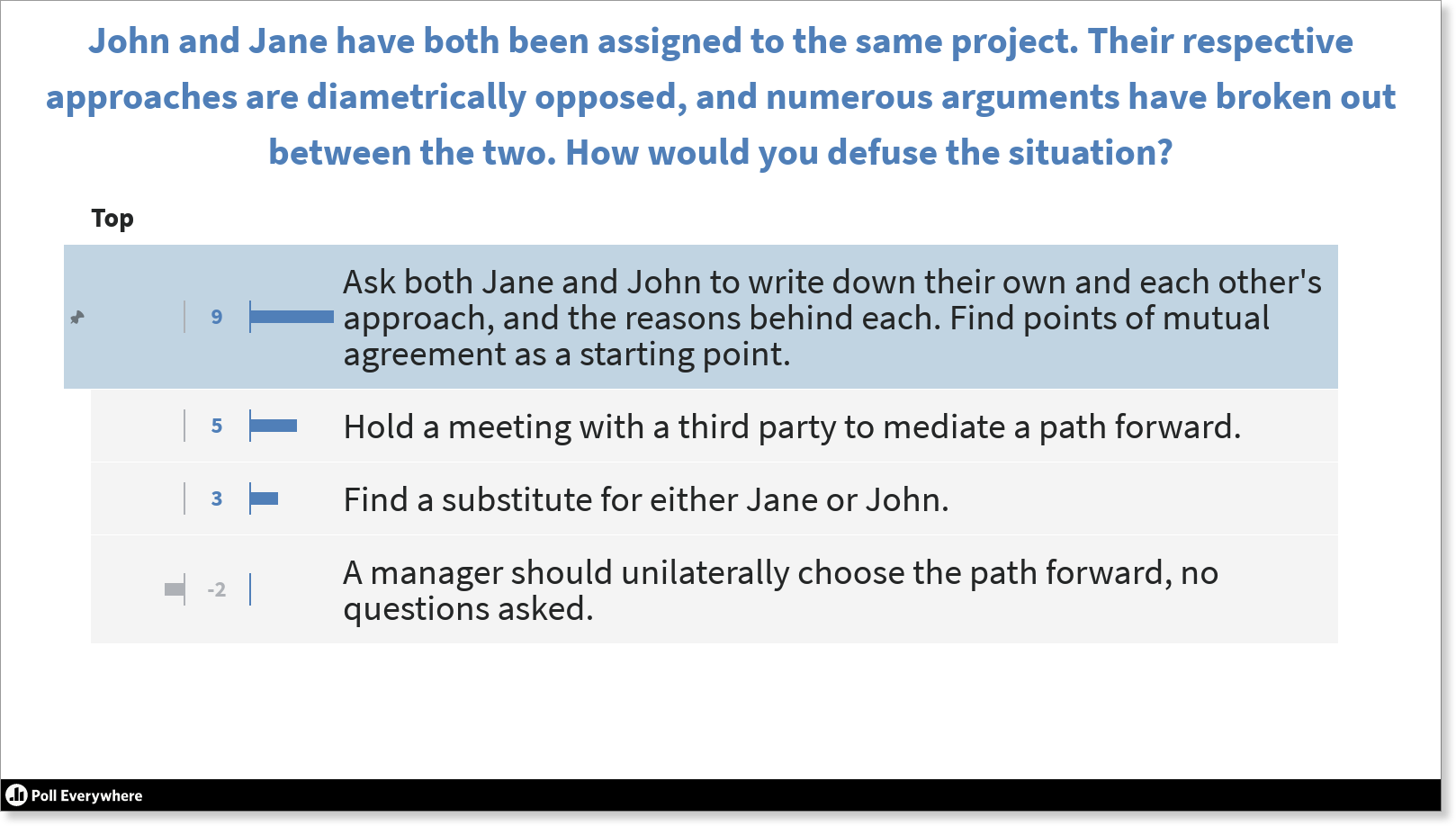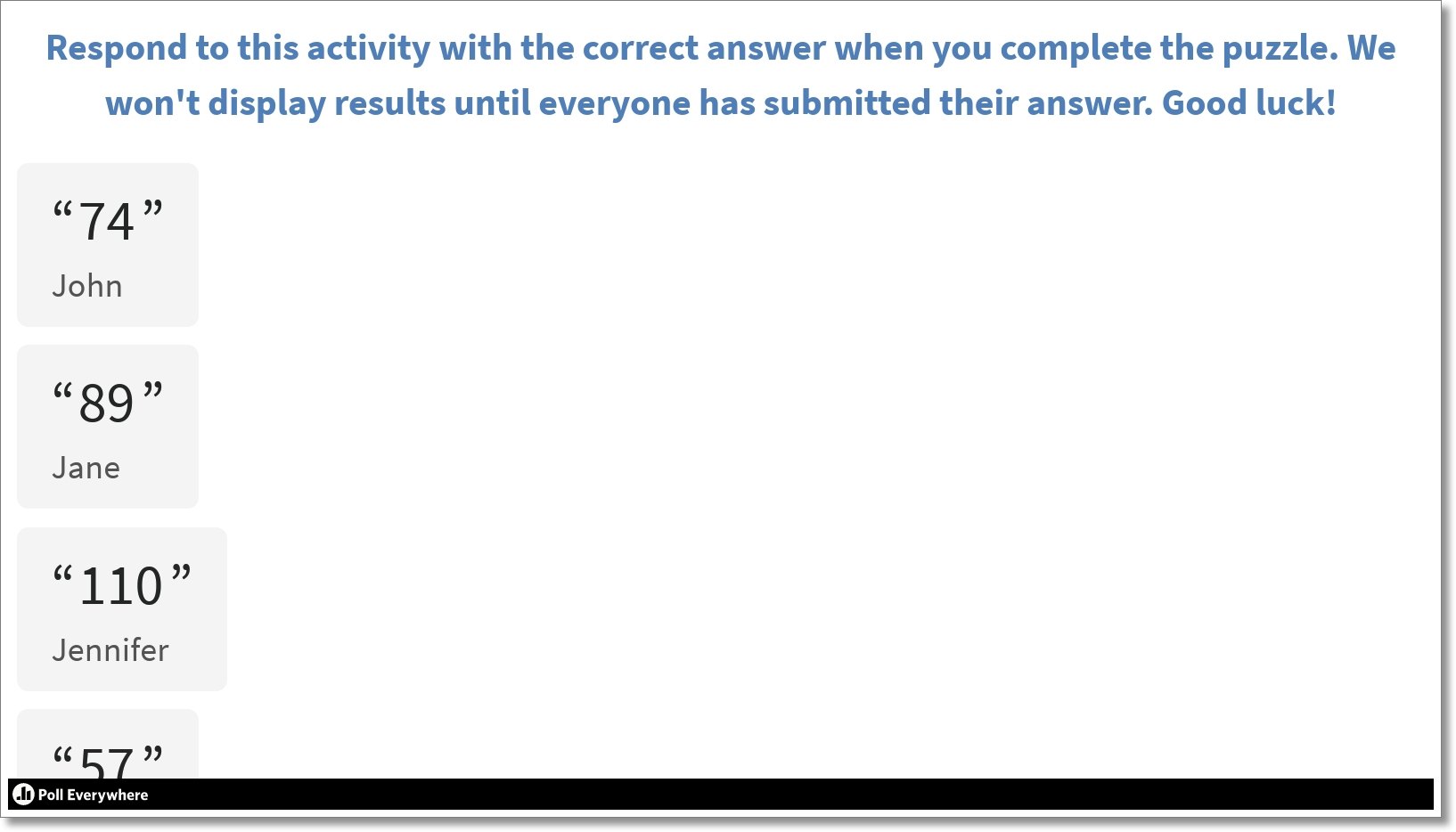How to get better corporate training results with gamification

How far will people go to avoid boredom?
According to University of Virginia researcher Timothy Wilson and his colleagues, far enough that many of us are willing to shock ourselves out of boredom — literally.
Rather than be alone with their thoughts for 6 to 15 minutes, many of Wilson’s subjects chose to give themselves a mild electric shock to break up the monotony.
For corporate training pros, there’s good and bad news here. The bad news is that people get bored easily, and bored learners lead to poor learning outcomes. The good news? Learners, simply by virtue of being human, are constantly looking for some excuse — any excuse — to be engaged.
And therein lies the opportunity for learning and development professionals. Learners want to be engaged.
So how do you engage a group of eager learners? In a word, gamification.
Karl App, co-author of The Gamification of Learning and Instruction: Theory into Practice, uses Poll Everywhere to gamify his presentations. Here’s how you can do the same.
Gamifying conflict resolution with a Q&A activity

Create a list of five scenarios in which conflict is the dominating theme, asking learners how they would defuse the situation with a poll activity.
A multiple choice poll would do the trick here. Or, you could take it up a notch with an open-ended question — or even use a Q&A to let learners upvote the best answers.
Gaming, of course, implies a prize. The obvious choice is a prize for the answer with the most upvotes, or a cumulative prize for the person with the most points over each of the five scenarios (with a points system determined by you beforehand).
Software training with an open-ended activity

With every new software tool comes a learning curve. Whether your accounting team has adopted new tax software or your DevOps team is learning the ins and outs of a new project management system, it’ll take some time to get to the proficiency levels needed to see real productivity gains.
A training seminar is the perfect way to standardize practices and make sure everyone is on a level playing field.
Again, use gamification to create competition.
List a set of challenges starting from a basic skills level (“Find and fill out form 443-B for customer Keanu Reeves) to advanced (“Find the total deductions for Worldwide Organization X based on Forms 2-B and 4-A”), again using a points system to tally the day’s results. Use a sliding scale: award a few points for the easier exercises, and more for the challenging stuff.
Here, too, you can use polling to make things simpler: just have attendees reply to a Poll Everywhere activity with their name as soon as they complete the exercise to keep track of who finished when.
Strategic business planning in small groups
For training events or seminars that cover multiple days, you have a little room to get creative. Looking for new revenue streams or budget-cutting initiatives? Break your audience into groups, challenging them to come up with new ways to improve the bottom line.
Depending on your time constraints, you may want to allow an hour for this, or you may ask teams to get together in their off-hours to submit their best plan the following day. If possible, be ready to estimate the amount of revenue generated or saved (obviously this will be a very rough estimate), awarding the team that saves the most cash the grand prize.
Wrapup
Gamification works because it takes good old human nature into account. We are all kids at heart, and we love to play. So it’s no surprise that we learn best when we’re having fun. That it leads to better learning outcomes is just the cherry on top.
I’ll leave you with the words of Karl Kapp, gamification expert and Poll Everywhere enthusiast:
“Just as many industries benefited from the principles of industrial design, and interface design, and experience design…smart businesses and industries will quickly learn and adapt the principles of game design (‘or game mechanics’). Game design indeed has broad utility for learning and development, for changing health behaviors, and for motivating at-work behaviors, among other things.”
A version of this post originally appeared on Medium.